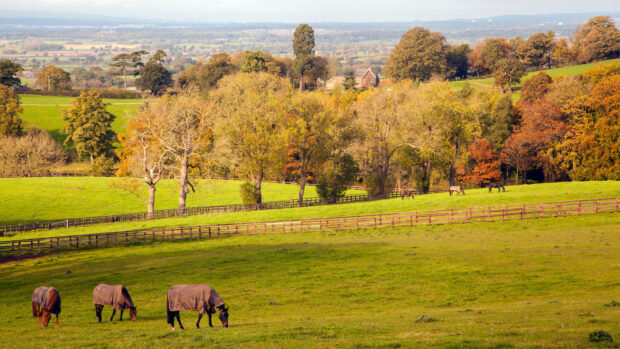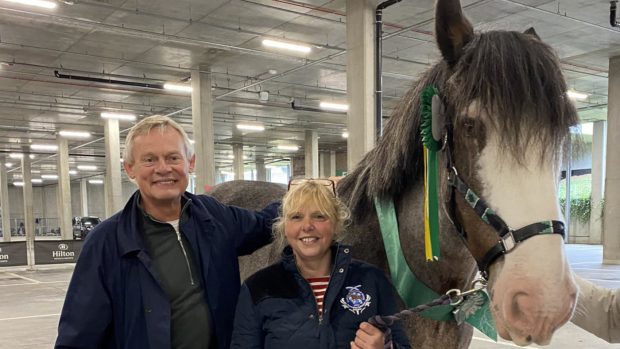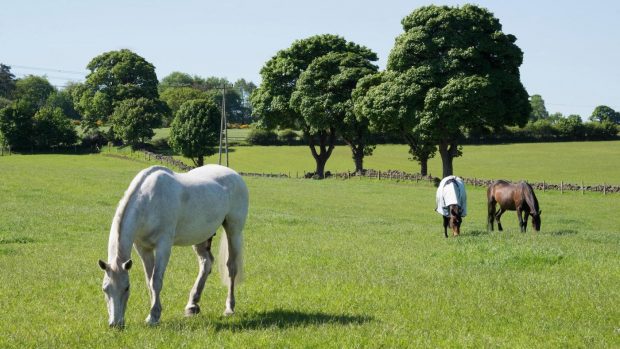The launch of a five-year research plan hopes to “shine a new light” on equine grass sickness.
The Equine Grass Sickness Fund (EGSF) has revealed its plans for 2021-2025 as the charity works together with scientists to look at the disease in “new ways and from fresh angles”.
A spokesman for EGSF said the research will be focused on the charity’s aims; cause, prevention and treatment.
“There are still questions to be answered about specific causal agents, and these will remain a focus of research, including mycotoxins and clostridium botulinum,” he said.
“We will also undertake an open-minded review of what has been done to date, and establish the known facts, in order to identify promising new angles for investigation. Equine grass sickness seems likely to be multifactorial, so a cross-disciplinary approach may produce dividends.”
The five-year plan will include work by newly recruited research fellow Kathy Geyer, while Bruce McGorum, head of the equine section at the University of Edinburgh, will take a research sabbatical from the Royal (Dick) Vet to focus on work looking at mycotoxins. A PhD student will also be recruited to work with Kathy in the laboratory developing organoid cultures, which involves recreating a piece of horse gut using cells, which can then be tested.
“Kathy is going to review all of the research done to date and take a view of where we might go next and what we might have missed,” Kate Thomson of EGSF told H&H.
“The plan is to bring in lots of scientists from different fields. Traditionally there has been a lot of equine vets looking into grass sickness so we now want to look at it from an environmental point of view and will have soil and plant experts feeding into the research.”
EGSF is recruiting horse owners and vet “ambassadors” to assist the charity in collecting samples for its biobank.
“There is a shortage of samples to use in the testing so we want to recruit vets that can help us with the horse samples and we need owners to be our eyes and ears by helping encourage people to report cases to us.
“There’s so much knowledge out there; we have the knowledge from scientists, but the owners and vets are the people dealing with grass sickness cases. They’re seeing what the weather is like, they know what the horse was doing the week before, when it was wormed, and all these different things. We don’t have enough of this information so we’re trying to bring the two together so that the people are helping inform the research going on and we can feed back on what we’re finding out.”
Kate described the five-year plan as “exciting” and a positive new approach.
Article continued below...

Hopes for grass sickness research with launch of new project
The three-year project will involve a fellow setting up a national database and sample biobank with the assistance from vets

Disappointing news in quest for equine grass sickness vaccine
The field trial for an equine grass sickness vaccine has proved inconclusive, but has also thrown up new information about

Subscribe to Horse & Hound magazine today – and enjoy unlimited website access all year round
“We’ve done a lot of great work so we’re saying ‘let’s gather it together, take a step back and review it’. We’re not dropping the theories we’ve already got because we think they all fit together somehow, but we just don’t know how yet,” said Kate.
“We’ve put the research into a five-year format so we have a specific date where we can say ‘where are we now?’ and ‘where do we go next?’. As soon as we work out what causes grass sickness, then we can work out what prevents it, which would be just amazing.”
EGSF plans to launch a series of webinars in March with more information on how people can support the charity and become involved.
Horse & Hound magazine, out every Thursday, is packed with all the latest news and reports, as well as interviews, specials, nostalgia, vet and training advice. Find how you can enjoy the magazine delivered to your door every week, plus options to upgrade to access our H&H Plus online service which brings you breaking news as it happens as well as other benefits.




